August 13, 2024, 7:00 pm | Read time: 10 minutes
Few animal families arouse such fascination in people as cats. Whether domestic or wild, these graceful beauties and skillful hunters inspire us. Every child is probably familiar with large wild cats such as lions, tigers, and leopards. But there are many other large and small members of the cat family. PETBOOK takes a closer look at 16 little-known wild cats.
Everyone probably has an image of the animal in their head when you talk about lions and tigers. But what about the kodkod or the manul? These animals are probably only familiar to die-hard cat fans. And yet, the feline family is much larger than you might initially think. Unfortunately, the lesser-known animals are often overlooked. Wrongly so, as PETBOOK finds, because these 16 beautiful but unfortunately little-known wild cats deserve at least as much attention as lions, tigers, and the like.
16 little-known wild cats at a glance
Small-spotted Genet
At first glance, it may be surprising to learn that the Small-spotted Genet is actually a lesser-known wildcat rather than a hybrid of marten and mouse. It is found in Europe, Africa, and parts of the Middle East.
Its unique distinguishing feature is its bushy tail, which is extremely long and curled compared to its small body. Even though the small-spotted genet looks striking and fascinating at first glance, it is best not to get too close to it. It produces a potent musk odor and, when threatened, releases a thick, foul-smelling secretion from its anal gland.
The clouded leopard
It creeps through the dense rainforests of Southeast Asia and can even climb upside down. The nocturnal clouded leopard is primarily found in trees, where it hunts gibbons and other monkeys. The spots on its legs are reminiscent of leopard fur, while it has its very own camouflage pattern on its back. Even experienced biologists rarely spot this shy big cat among its habitat’s leaves, branches, and creepers.
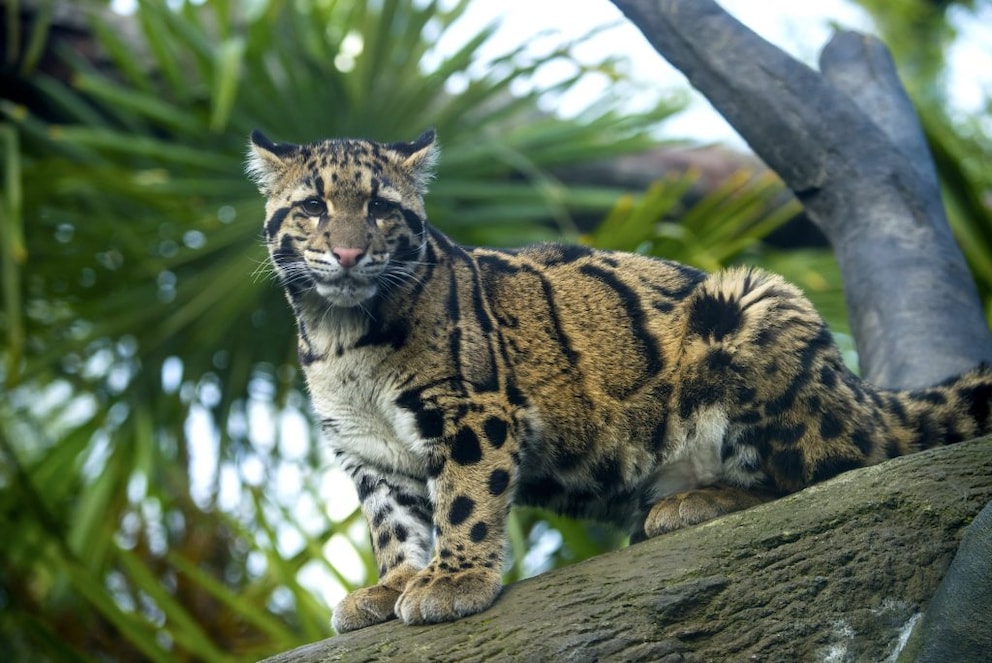
The serval
Long legs, slender, spotted body, small head with large ears – that’s the serval. This elegant feline predator inhabits the steppes and savannahs of Africa, where it preys on rodents and small birds. Some people are so fascinated by this wild beauty that they keep it as a pet – which is, of course, not a good idea for animal welfare reasons. The questionable enthusiasm for the serval goes so far that people wanted to breed a living room variety. To this end, it was mated with domestic cats, and the Savannah cat breed was created. However, breeding with wild cats should be rejected for animal welfare reasons. This is because many domestic cats die during mating, pregnancy, and birth of the hybrid animals.
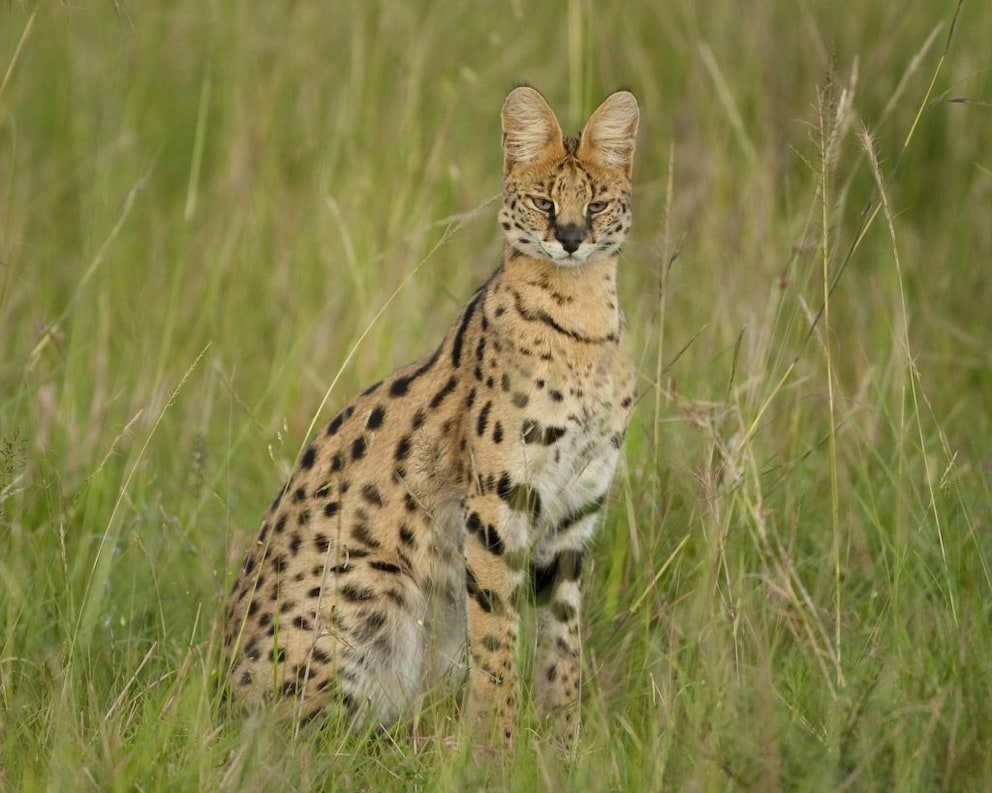
The fishing cat
Unlike many other cats, the fishing cat’s name says it all because it is an enthusiastic swimmer. It fishes for its prey out of the water, and there are actually small webbed feet between its toes. The fishing cat is common in lakes and slow-flowing rivers in Bangladesh, Thailand, and Cambodia. As populations are declining, the species has now been classified as endangered.
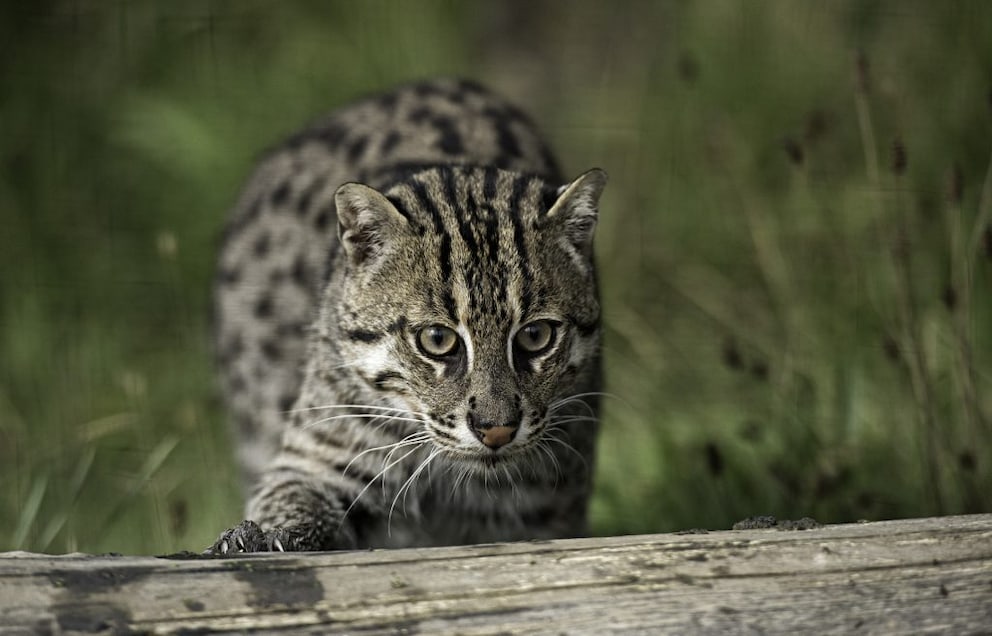
The manul or the Pallas cat
The manul, known for its expressive face, has gained more recognition among cat enthusiasts than the general public. Also known as the Pallas’s cat, this species is mainly found in Asia. The shy animals live in the rocky steppes of Central Asia and Russia. However, they now also live on Mount Everest. Accordingly, the wildcat, with its stern appearance, has thick and fluffy fur.
A special feature of this species is its round pupils and ears. They share this characteristic with their larger relatives, such as lions and tigers. Small cats, such as our domestic cats, typically have slit-shaped pupils.
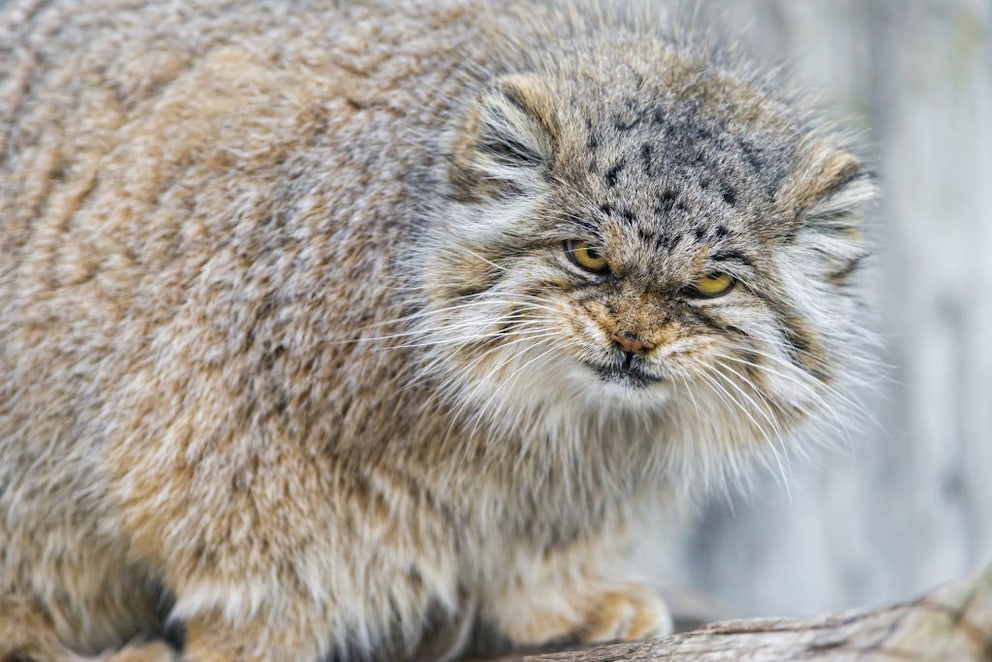
The caracal
The caracal’s characteristic feature is its long, dark ear tufts. Its Turkish name translates as “black ear.” The caracal mainly lives in Africa but also inhabits the Middle East in steppe landscapes and dry areas. These wild cats are not exactly popular there, as they repeatedly kill sheep and goats. In doing so, they often kill more animals than would be necessary to satisfy their appetite. As a result, the caracal is even hunted in southern Africa.
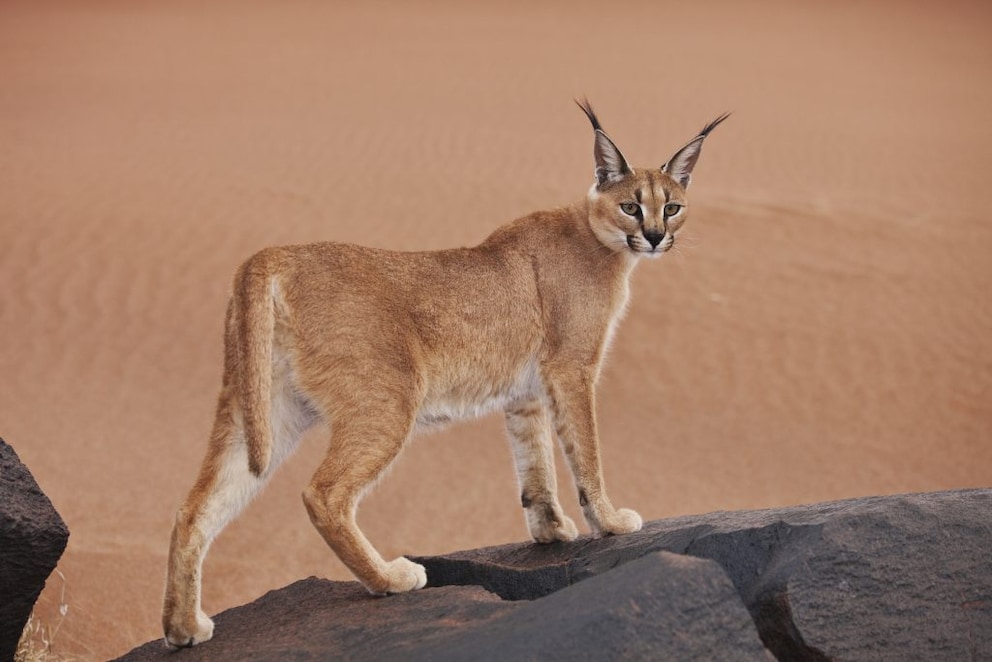
The leopard cat
The leopard cat—not to be confused with the domesticated Bengal cat or the leopard—is widespread in Asia. It lives in tropical rainforests as well as subtropical mixed and coniferous forests. There, it lives as a crepuscular and nocturnal solitary animal.
The mating of Leopard cats and domestic cats has resulted in the Bengal cat breed. The crossing of wild and domestic cats must also be regarded as harmful to animal welfare, as many domesticated cats suffer from the trend towards hybridization.
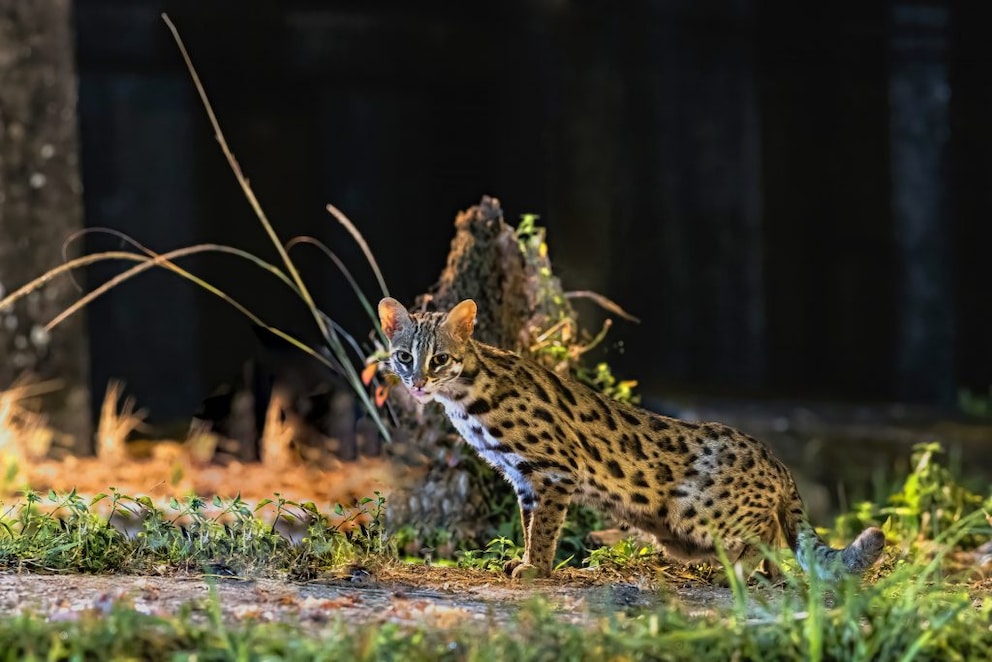
The jaguarundi or weasel cat
The jaguarundi’s marten-like appearance earned it the nickname weasel cat. This little-known wild cat lives on the American double continent and is most common in the pampas of Argentina and Mexico. It lives mainly in sparse forests and scrubland.
Its diet includes possums, birds, fish, and insects. Like the leopard and the jaguar, the jaguarundi is a dark-colored animal that produces a lot of melanin. However, it also comes in shades of red, which makes its relationship to pumas clear—because the small cats have nothing to do with the jaguar.
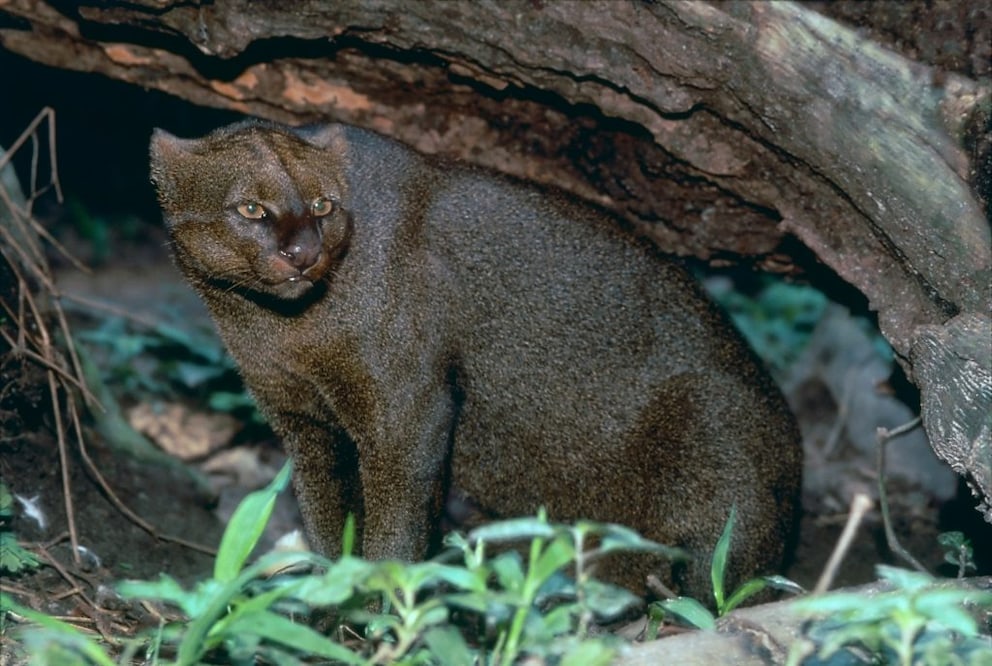
The sand cat
High forehead, big eyes, small snout: the sand cat looks cute but is a real tomboy. It is also one of the smallest wild cats in the world. Due to its beige fur color, it is ideally camouflaged in the barren stone and sand deserts of North Africa to Central Asia. It escapes the heat of the day in burrows it has dug itself, but also has rather wiry fur under its paws so that it can walk over hot sandy ground without burning its paws. This wild cat hunts small rodents, birds, and lizards at night. To find a mate, it emits a barking call.
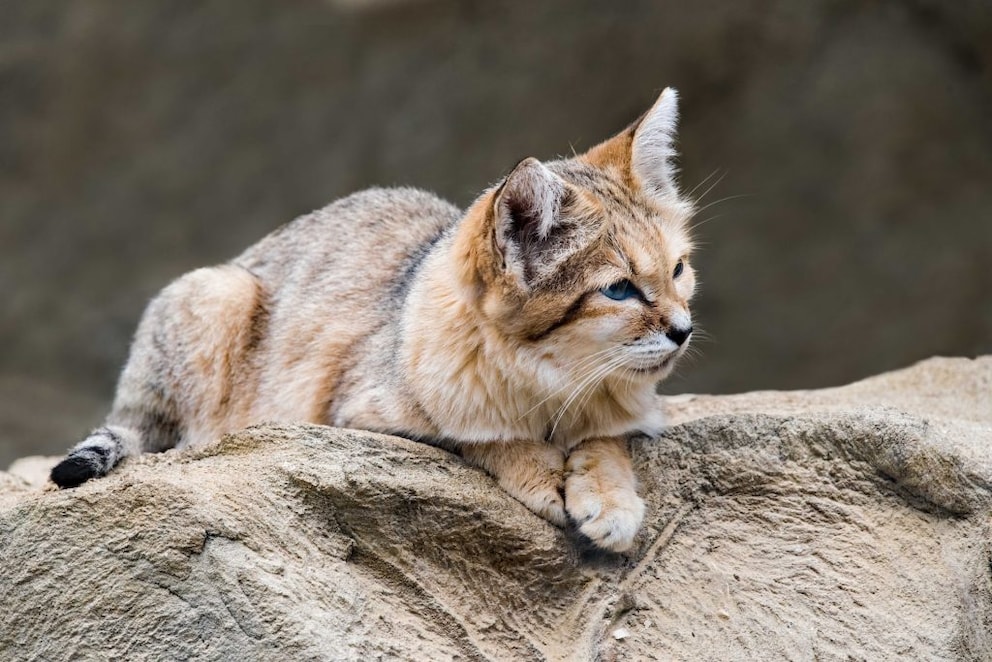
Rusty cat
The rusty cat is the smallest wild cat in the world and is also little known. At 38 to 45 centimeters, it is as big as the black-footed cat, the deadliest wild cat in the world. However, as it is even lighter than the black-footed cat at 1.5 to 2 kilograms, it can certainly defend its title as the “smallest wild cat in the world.” It is mainly inhabits forested regions in India and Sri Lanka.
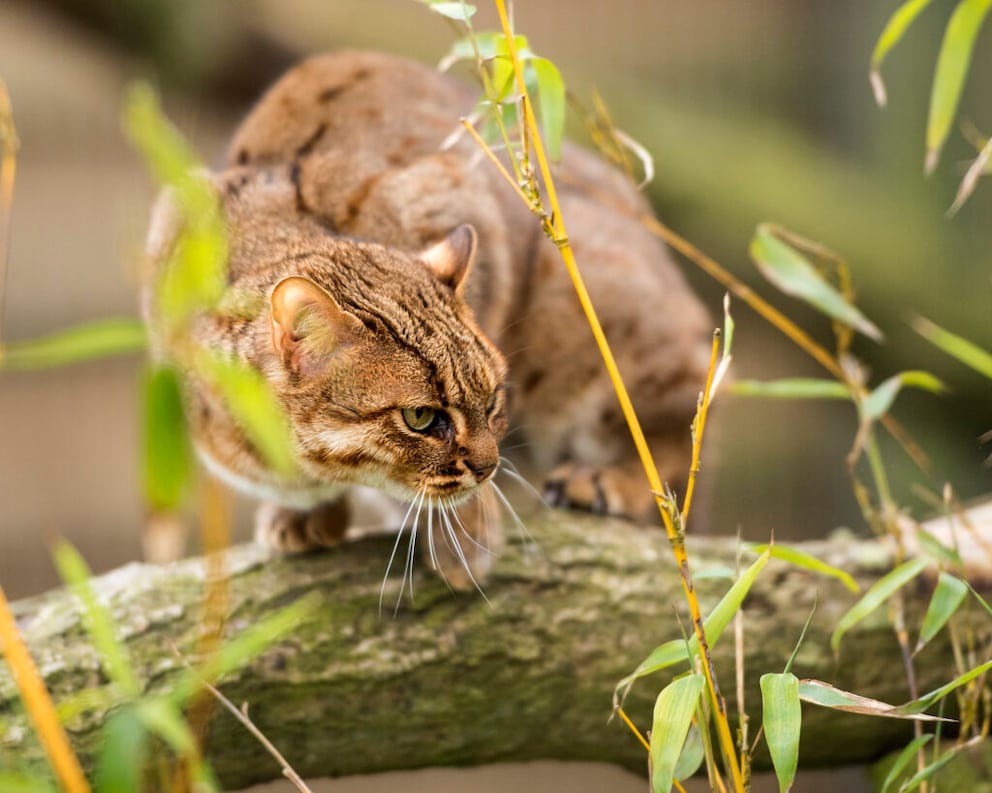
Kodkod or Guiña
The kodkod, guiña, or Chilean forest cat goes by many names. It is the smallest of all wild cats on the American double continent, measuring only around 40 to 50 centimeters tall and weighing a maximum of three kilos. It lives mainly in the Andes and has a typical wild cat pattern in its fur. Its ears are small and round, and its tail is very long and bushy. The small cat’s cute appearance is mainly due to its small face and relatively large eyes. It feeds primarily on small rodents but also birds and insects.
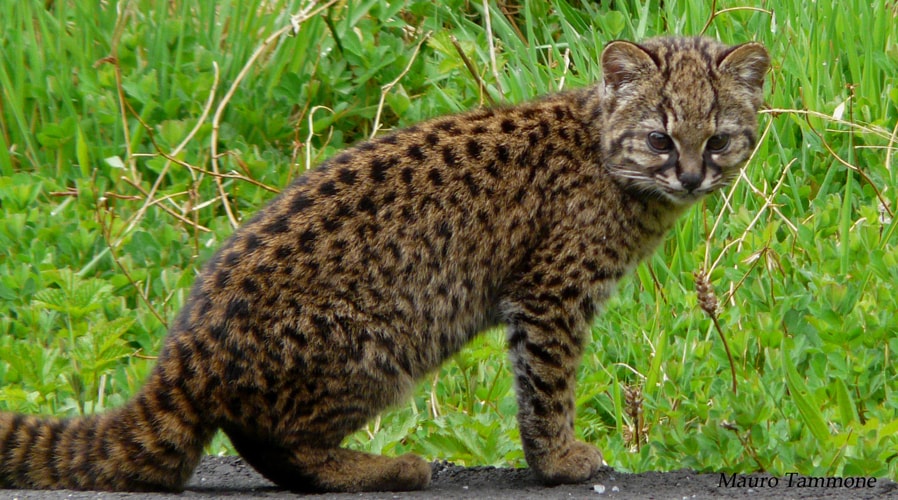
Asian golden cat
The Asian golden cat mainly inhabits Southeast Asia. This solitary, medium-sized wild cat has no great demands on its territory and can be found in the Himalayas at altitudes of up to 3000 meters, but also in tropical rainforests in Thailand. There is also a legend that if you carry just one hair of the golden cat with you, you are safe from tiger attacks.
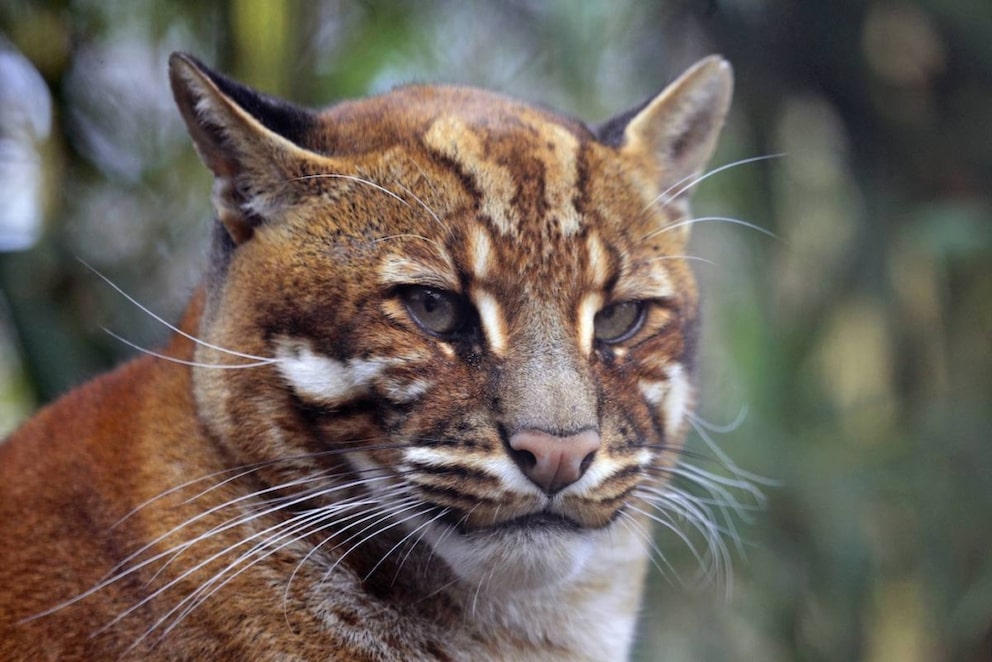
Andean cat
The Andean cat, sometimes called the mountain cat, lives up to its name because it is mainly found in the high mountains of the Andes and is a sacred animal for the Quechua people. It is the only small cat with a striped pattern rather than a spotted one. It is an absolute habitat specialist with a penchant for high altitudes and is only found in semi-arid and stony areas above the tree line. Because it lives above 4000 meters altitude, there is very little research on this shy and little-known wild cat.
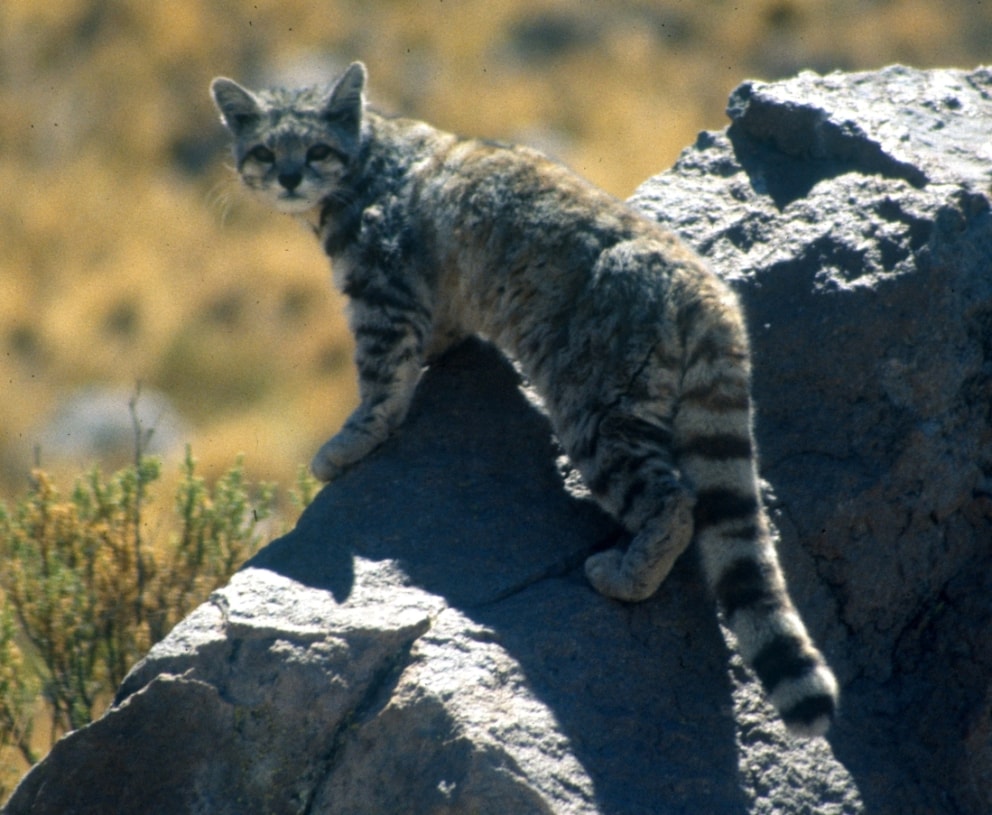
Marbled cat
The marbled cat is mainly found in Southeast Asia and can climb down trees upside down with its powerful claws. It shares its habitat with the clouded leopard, but its completely spotted fur and the cat hump it displays when sitting make it easy to distinguish. It spends much of its time in the treetops of tropical jungles in Borneo, Sumatra and the foothills of the Himalayas. The marbled cat is only slightly larger than the domestic cat and weighs two to five kilograms.
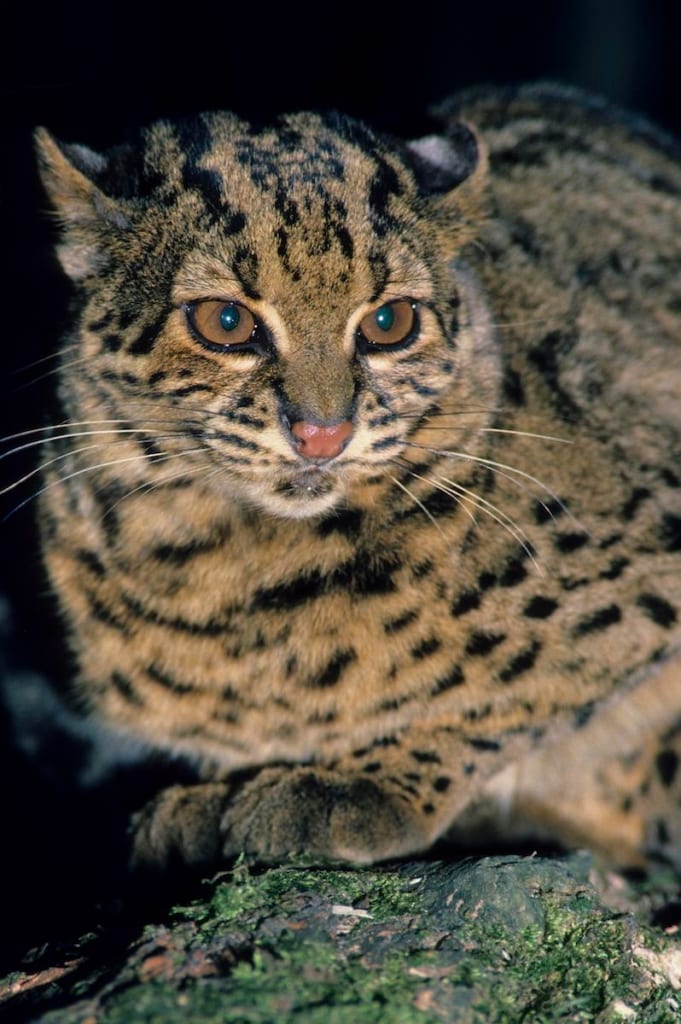
Ocelot
The ocelot takes us back to America, more precisely, Central and South America. It is a medium-sized wild cat with a relatively short tail. What makes this little-known wild cat so unique are its different fur patterns. The ocelot is found in both tropical rainforests and dry steppes – and adapts its fur pattern to its surroundings. In the rainforest, they tend to be ochre and orange; in the steppe, the pattern tends towards gray. The spots of the ocelot are very clearly recognizable and become stripes on the mostly white-colored belly. The ocelot is the subject of Nahuatl legends and appears in Aztec mythology in descriptions of the god Quetzalcoatl.
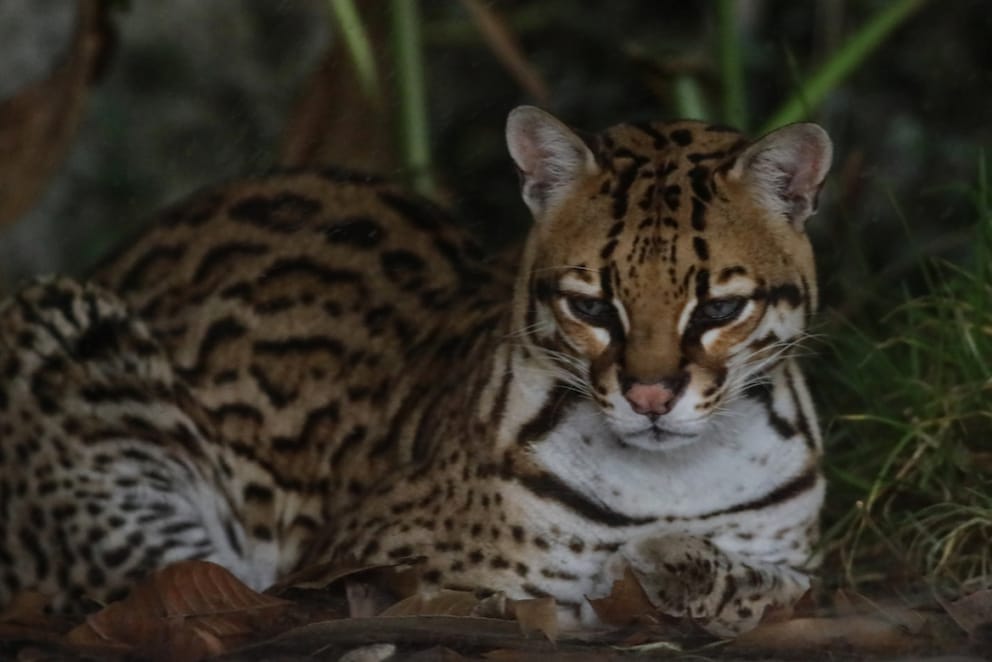
Pampas cat or colocolo
The pampas cat or colocolo is undoubtedly one of the little-known and little-researched wild cats. There is even disagreement as to how many species of Pampas cat there actually are. Like the ocelot, pampas cats differ greatly in appearance depending on their colonizing habitat. Whether the southern pampas cat and the panatal pampas cat differ from the colocolo or are separate species is a matter of scientific debate. They belong to medium-sized wild cats and usually have a brown or grey base color, with dark feet and stripes on the legs.
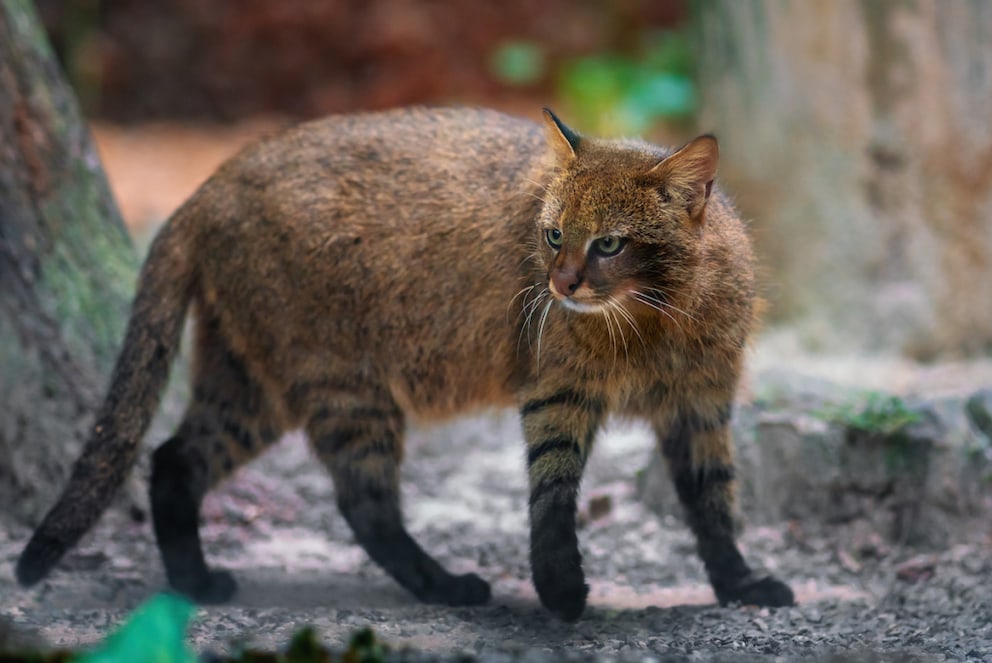

Test Your Knowledge in the Ultimate Wildcat Quiz! How Many Questions Can You Answer?

A New Small Cat Species Discovered in the Rainforest

Leopard or Jaguar? How to Tell the Spotted Wild Cats Apart
Sources
- WWF, “Clouded leopard in the species lexicon” (accessed on 18.8.2022)
- Mission for animals in need, “Servals – too wild for any home” (accessed on 18.8.2022)
- Zoo-leipzig.de, “Fishing cat” (accessed on 18.8.2022)
- Wildkatzen-barnim.de, “JAGUARUNDI (Herpailurus yagouarundi)” (accessed on 18.8.2022)

